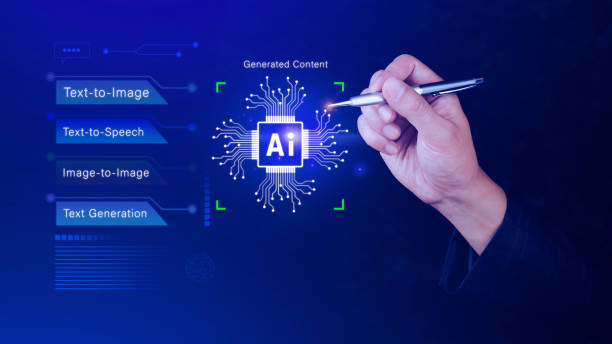What is an AI Robot and what are its applications?
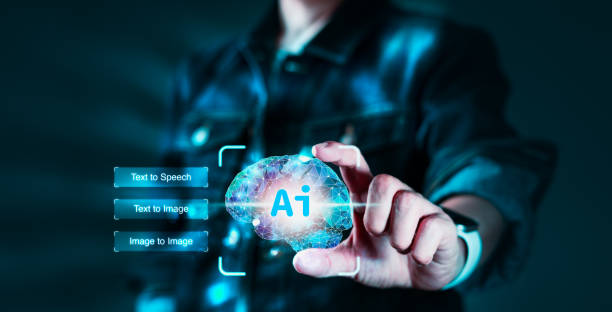
An Artificial Intelligence robot, often known as an #AI_Robot, is a combination of two advanced technology fields: Artificial Intelligence and Robotics.
Simply put, an AI robot is a physical or virtual machine that, using artificial intelligence algorithms, is capable of performing tasks that typically require human intelligence.
These tasks can include learning, reasoning, problem-solving, natural language understanding, and even creativity.
AI robots currently have numerous applications in various industries, including manufacturing, healthcare services, logistics, and customer services.
These robots are capable of automating repetitive and tedious tasks, increasing accuracy and efficiency, and even operating in dangerous environments instead of humans.
For example, in the manufacturing industry, AI robots are used for assembling parts, quality inspection, and product packaging.
In the healthcare sector, AI robots can assist surgeons in complex operations, care for patients, and even prescribe appropriate medications.
In the customer service sector, chatbots, which are a type of AI robot, can answer customer questions, resolve their issues, and even introduce new products and services to them.
The use of AI robots not only helps improve efficiency and reduce costs but can also lead to new innovations and the creation of new job opportunities.
Are you bothered by losing customers due to your online store’s outdated appearance or slow speed? Rasab’s expert team solves these problems with professional e-commerce website design!
✅ Increase customer trust and your brand’s credibility
✅ Blazing speed and excellent user experience
Get a free consultation with Rasab now ⚡
Types of AI Robots Based on Application

AI robots are divided into different categories based on their diverse applications.
One of the most common classifications is based on the type of task the robot performs.
Industrial AI robots are used to automate production processes and increase productivity in factories.
These robots usually have powerful mechanical arms and advanced sensors, capable of performing tasks such as welding, painting, and assembling parts with high precision and speed.
Service AI robots are designed to provide customer services and improve user experience.
Chatbots, virtual assistants, and delivery robots are among this category of robots.
They can answer customer questions, place orders, deliver goods, and even assist nurses in hospitals.
Medical AI robots are used in the field of treatment and patient care.
These robots can assist surgeons in complex operations, deliver medications to patients, monitor their vital signs, and even play a role in patient rehabilitation.
Military AI robots are used for military tasks such as threat detection, bomb disposal, and reconnaissance operations.
The use of these robots can help reduce risks to soldiers’ lives and increase the efficiency of military operations.
These classifications are only a part of the types of AI robots, and with technological advancements, we will witness the emergence of new types of these robots.
AI robot
Main Components of an AI Robot

An AI robot is composed of various components, each responsible for a specific task.
These components work in harmony with each other so that the robot can perform its duties correctly.
One of the most important components of an AI robot is its sensors.
Sensors collect information about the surrounding environment, allowing the robot to be aware of environmental conditions.
There are various types of sensors, including cameras, microphones, temperature sensors, pressure sensors, and proximity sensors.
This information collected by the sensors is sent to the robot’s processor.
The processor is the brain of the robot, responsible for processing information, making decisions, and controlling the robot’s functions.
The processor typically consists of a computer or microcontroller programmed using artificial intelligence algorithms.
Actuators are components that allow the robot to interact with its surroundings.
There are various types of actuators, including motors, cylinders, pumps, and speakers.
These actuators can move the robot, manipulate objects, produce sound, and perform other tasks.
The power source provides the necessary energy for the robot’s operation.
The power source can be a battery, an AC power supply, or a fuel cell.
Software is a set of programs and algorithms that control the robot’s performance.
The software includes AI algorithms, motion control algorithms, and image processing algorithms.
These components work in harmony with each other so that the AI robot can perform its tasks correctly.
AI robot.
| Component | Function |
|---|---|
| Sensors | Gathering information from the environment |
| Processor | Processing information and decision-making |
| Actuators | Interacting with the environment |
| Power Supply | Providing energy |
| Software | Controlling robot functions |
Challenges and Limitations of AI Robots

Despite significant advancements in robotics and artificial intelligence, AI robots still face challenges and limitations.
One of the most important challenges is the high complexity of designing and building these robots.
Designing an AI robot capable of performing complex and diverse tasks requires deep knowledge and expertise in various fields such as robotics, artificial intelligence, electronics, and software.
Furthermore, building these robots is usually very costly and requires advanced equipment and facilities.
Another challenge is the reliability and security of these robots.
AI robots must be able to operate correctly in various and unpredictable conditions and prevent accidents.
Additionally, the security of these robots against cyber-attacks and misuse must be ensured.
Ethical limitations are also another significant challenge in the field of AI robots.
The use of these robots in some areas, such as weaponry, can lead to serious ethical issues.
Also, it should be noted that AI robots should not replace human labor and should be used as tools to assist humans.
Despite these challenges and limitations, it is expected that with technological advancements, AI robots will play a more important role in our lives and help solve many problems.
AI robot.
Is your current e-commerce website not generating the sales you expect?
Rasab is an expert in professional e-commerce website design!
✅ An attractive and user-friendly site aimed at increasing sales
✅ High speed and security for an ideal shopping experience⚡ Get a free consultation for online store design with Rasab!
What will be the Future of AI Robots?
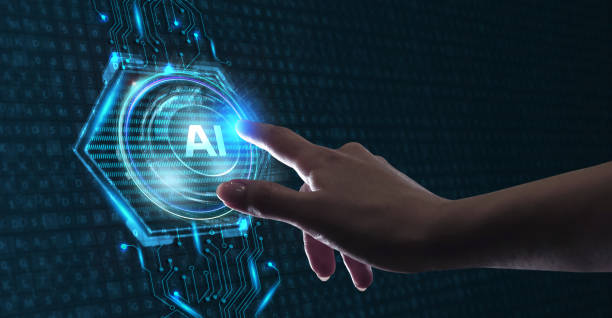
The future of AI robots looks very bright and promising.
With continuous advancements in artificial intelligence and robotics, it is expected that AI robots will be capable of performing more complex and diverse tasks.
In the future, we will witness the emergence of robots capable of learning from their experiences, solving complex problems, and even exhibiting creativity.
These robots can play an important role in various industries, including manufacturing, healthcare services, education, and even arts and entertainment.
For example, in the manufacturing industry, AI robots can autonomously manage production lines, control product quality, and even design new products.
In the healthcare sector, AI robots can assist doctors in diagnosing diseases, deliver medications to patients, and even perform surgeries.
In the education sector, AI robots can help students learn new concepts, correct their assignments, and even provide them with academic counseling.
Furthermore, AI robots can also play an important role in our daily lives.
Household robots can help us with chores, care for the elderly and children, and even engage in social interaction with us.
However, it should be noted that the development of AI robots must be carried out considering ethical and social issues.
It must be ensured that these robots operate for the benefit of humans and do not harm them in any way.
Impact of AI Robots on the Job Market
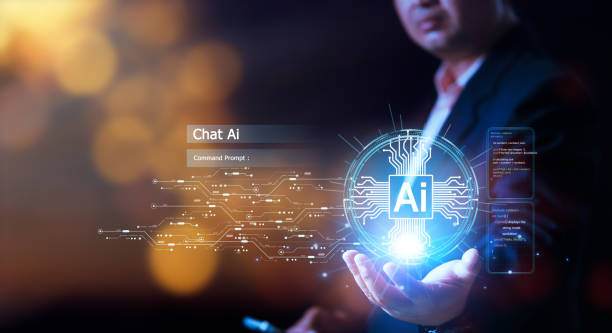
The entry of AI robots into the job market has brought about widespread impacts and sparked numerous debates regarding the future of human employment.
On one hand, this technology, by automating repetitive and arduous tasks, can lead to increased productivity and reduced costs.
This can be profitable for companies, enabling them to gain a better position in the competitive market.
On the other hand, automation can lead to the loss of some jobs, especially those requiring low and repetitive skills.
This issue has raised concerns about increased unemployment and social inequality.
However, it should be noted that AI robots are not only a threat to jobs but can also create new job opportunities.
The development, maintenance, and support of AI robots require skilled human resources.
Additionally, with increased productivity and reduced costs, companies can invest in new activities and create new jobs.
To benefit from the advantages of AI robots and mitigate their negative effects, it is essential for governments and organizations to pay special attention to training and empowering human resources.
Individuals must acquire the necessary skills to work with AI robots and perform tasks that require creativity, critical thinking, and problem-solving.
Furthermore, policies must be formulated and implemented to support individuals who lose their jobs.
AI robot
AI Robots and Privacy
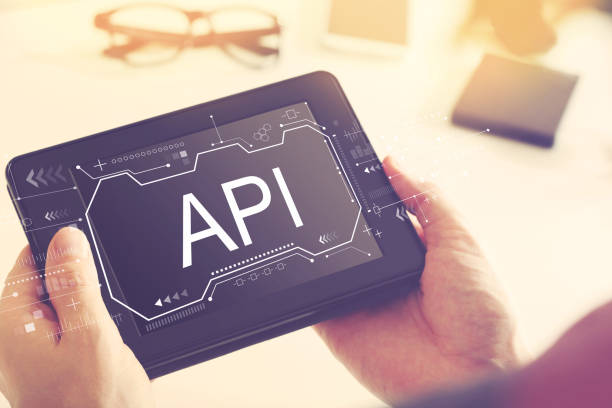
The widespread use of AI robots has raised concerns about individuals’ privacy.
AI robots require the collection and processing of a large volume of data to perform their tasks.
This data can include personal information such as name, address, phone number, email, financial information, and health-related data.
The collection and processing of this information can lead to a breach of individuals’ privacy, especially if this information is not properly protected or falls into the hands of malicious individuals.
For example, a home AI robot equipped with a camera and microphone can record images and sounds related to individuals’ private lives and send this information to the manufacturer.
This information can be used for advertising purposes, data collection, or even misuse.
To protect individuals’ privacy in the age of AI robots, strict laws and regulations must be enacted regarding data collection, processing, and storage.
Additionally, AI robot manufacturers must use advanced security technologies to protect data and allow users to have more control over their information.
Users must also be aware of the potential risks of AI robots and use appropriate privacy settings.
AI robot.
| Factor | Description |
|---|---|
| Data Collection | AI robots collect personal data through sensors and user inputs. |
| Data Processing | Collected data is processed to train AI models and improve robot performance. |
| Data Security | Protecting personal data from unauthorized access and misuse is essential. |
| Transparency | Users should be aware of how their data is collected and used. |
Ethical Aspects of AI Robots
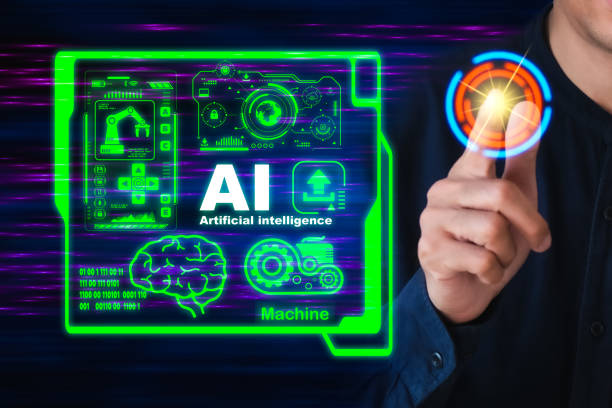
The development and use of AI robots raise important ethical issues that require special attention.
One of the most crucial ethical issues is accountability.
If an AI robot makes a mistake and harms someone, who is responsible? Is it the manufacturing company, the programmer, or the robot itself? This question still lacks a definitive answer and requires further discussion and investigation.
Another ethical issue is discrimination.
Artificial intelligence algorithms can make discriminatory decisions based on their training data.
For example, a recruitment algorithm might inadvertently reject individuals of a specific race or gender.
To prevent discrimination, it is necessary to thoroughly review AI algorithms and select their training data in a fair and unbiased manner.
Another ethical issue is autonomy.
Should AI robots be allowed to make their own decisions without human intervention? If AI robots become too autonomous, they might pose risks to humans.
For example, a military AI robot might decide to attack a target without permission.
To prevent these dangers, the autonomy of AI robots must be limited and always subject to human oversight.
AI robot
Are you tired of your e-commerce website having visitors but no sales? Rasab solves your main problem with professional e-commerce website design!
✅ Significant sales increase with targeted design
✅ Flawless user experience for your customers
⚡ Get a free consultation!
Most Popular AI Robots in the World
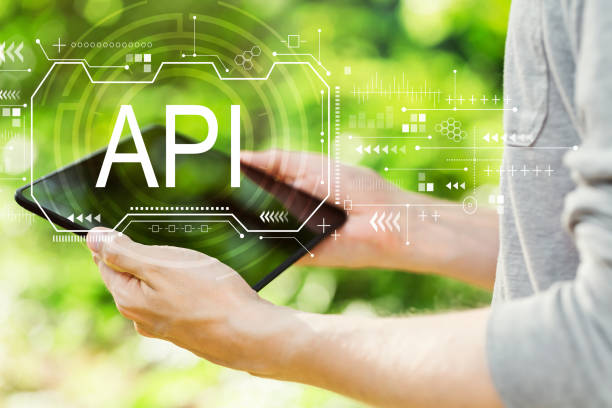
Currently, numerous AI robots are being developed and used worldwide, each with its specific applications.
Some of these robots have gained more fame due to their unique capabilities and uses.
Sophia is one of the most famous AI robots in the world, built by the Hong Kong-based company Hanson Robotics.
Sophia is capable of mimicking human facial expressions, answering questions, and engaging in simple conversations.
Atlas is a humanoid robot built by the American company Boston Dynamics.
Atlas is capable of walking, running, jumping, and performing acrobatic movements.
Asimo is a humanoid robot built by the Japanese company Honda.
Asimo is capable of walking, running, dancing, and performing simple tasks.
Kuri is a home robot built by the American company Mayfield Robotics.
Kuri is capable of moving around the house, identifying people, playing music, and performing simple tasks.
In addition to these robots, other AI robots are also under development and are expected to play a more significant role in our lives in the future.
AI robot.These robots will have applications in various fields including manufacturing, healthcare, education, and even arts and entertainment.
How to Build an AI Robot?
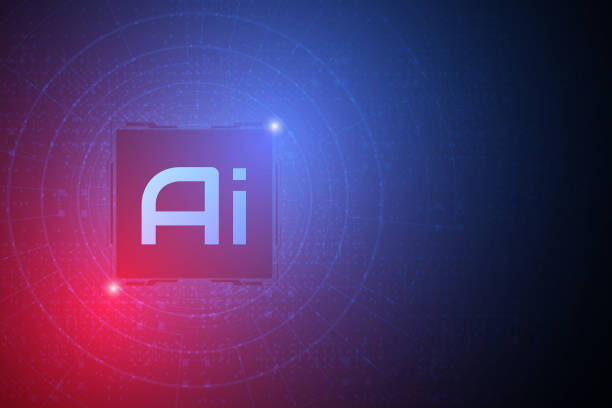
Building an AI robot can be a challenging but very exciting project.
To get started, you need knowledge and skills in various fields such as robotics, electronics, programming, and artificial intelligence.
The first step is to choose the type of robot and define its purpose.
You need to decide what kind of robot you want to build and what tasks it should perform.
For example, you can build a simple robot that can move along a specified path, or a more complex robot that can detect objects and interact with its surroundings.
After defining the goal, you need to acquire the necessary parts and components to build the robot.
These parts include motors, sensors, a microcontroller, a battery, and the robot’s body.
After acquiring the parts, you need to connect them to each other and build the robot’s electronic circuit.
This requires knowledge and skills in electronics.
After building the circuit, you need to write a program to control the robot.
This program should instruct the microcontroller on how to control the motors, read the sensors, and interact with the environment.
To write the program, you can use various programming languages such as C++, Python, or Arduino.
Finally, you need to add artificial intelligence algorithms to the robot so that it can perform its tasks intelligently.
For this, you can use various AI libraries such as TensorFlow or PyTorch.
Building an AI robot requires patience, perseverance, and considerable effort.
But by acquiring the necessary knowledge and skills, you can build an AI robot that is capable of performing complex and interesting tasks.
AI robot
Frequently Asked Questions
| Question | Answer |
|---|---|
| What is an AI robot? | An Artificial Intelligence robot (AI Robot) is a machine capable of understanding its environment, reasoning, learning, and making decisions to perform tasks autonomously. |
| What is the difference between ordinary robots and AI robots? | Ordinary robots perform repetitive tasks based on prior programming, while AI robots can learn from experience, interact dynamically with the environment, and even behave in a way that resembles human intelligence. |
| What are the main applications of AI robots? | They are used in industries (manufacturing, assembly), medicine (surgery, diagnosis), services (customer support, domestic), exploration (space, underwater), and many other fields. |
| What technologies are used in building AI robots? | Machine Learning, Computer Vision, Natural Language Processing, Deep Learning, and Robotics are among the key technologies. |
| Can AI robots have emotions? | Currently, robots do not have emotions in the human sense. They can recognize and react to emotions, but they do not experience emotions themselves. |
| What are the main challenges in developing AI robots? | Safety, reliability, ethics, autonomy, adaptability to complex environments, and natural human interaction are important challenges. |
| How do AI robots learn? | They typically learn using large volumes of data, machine learning algorithms, and deep learning to identify patterns and make decisions. |
| Examples of AI robots in daily life? | Smart robotic vacuum cleaners, customer support chatbots, self-driving cars, and surgical robots in hospitals. |
| Are AI robots a threat to human jobs? | Some repetitive jobs may become automated, but at the same time, robots can increase productivity and create new jobs in the development, maintenance, and oversight of these systems. |
| How is the future of AI robots predicted? | They are expected to become smarter, more autonomous, and capable of performing more complex tasks, engaging in closer interaction with humans in various environments. |
And other advertising agency services by Rasab Web in advertising:
- Smart Marketplace: A professional solution for digital branding with a focus on intelligent data analysis.
- Smart Content Strategy: A combination of creativity and technology to increase click-through rates through SEO-focused content strategy.
- Smart Conversion Rate Optimization: A fast and efficient solution for campaign management with a focus on attractive UI design.
- Smart Digital Advertising: A dedicated service for growth in sales based on the use of real data.
- Smart Customer Journey Map: Designed for businesses looking to increase click-through rates through Google ad management.
And over hundreds of other services in the field of internet advertising, advertising consulting, and organizational solutions.
Internet Advertising | Advertising Strategy | Advertorials
Resources
Comprehensive Guide to AI Robots on Digikala MagApplications of AI Robots on ZoomitAI Robot on Farsi WikipediaAI Robot videos on Aparat
? Ready to transform your business in the digital world? Rasaweb Afarin Digital Marketing Agency offers comprehensive solutions, from e-commerce website design to search engine optimization and social media management, paving your way to online success. Contact us today and revolutionize the future of your business.
📍 Tehran , Mirdamad Street ,next to Central Bank , Southern Kazeroun Alley , Ramin Alley , No. 6

